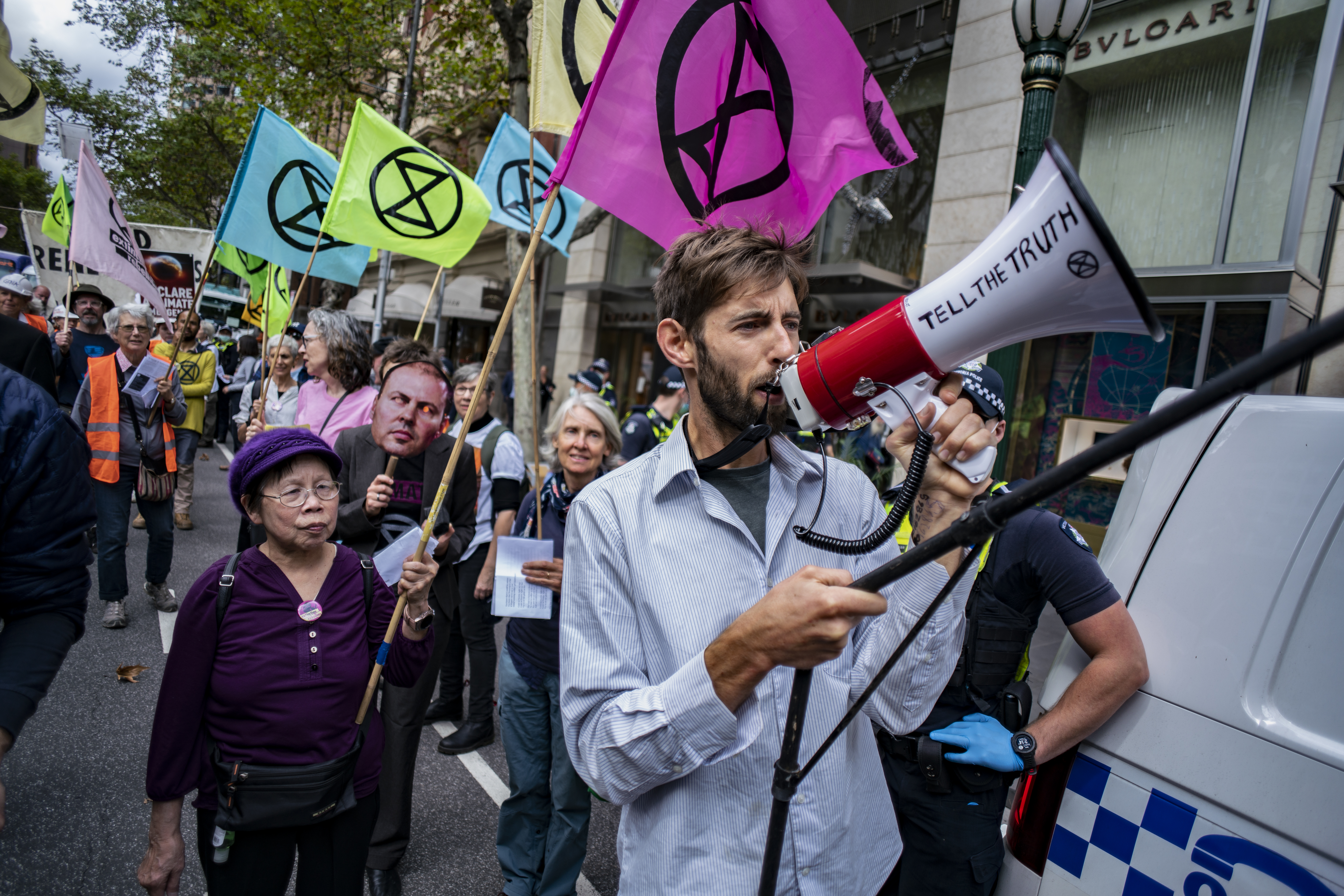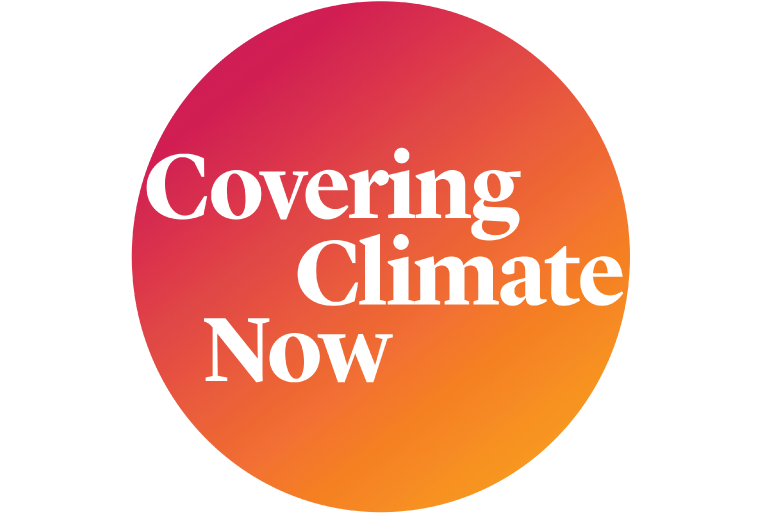Sign up for the daily CJR newsletter.
Given the enormity of the climate crisis, how would it look for an entire newsroom to respond at scale? France’s largest newspaper, Le Monde, might have one idea. Over the past year, Nabil Wakim, a climate and energy journalist at Le Monde, has helped oversee training initiatives aimed at bringing hundreds across the company up to speed. Wakim—who, before he became a climate journalist, held numerous leadership positions at the paper, including director of editorial innovation, digital editor in chief, and head of the politics section—says Le Monde isn’t quite an “all-climate newsroom” yet, but he hopes he and his colleagues are on their way.
Covering Climate Now spoke recently with Wakim about the details and results of Le Monde’s climate training program, beats for which a culture shift might come more slowly than others, and the climate questions weighing heaviest on the newspaper’s audience. The conversation, with CCNow deputy director Andrew McCormick, has been edited for length and clarity. Check out Wakim’s climate podcast and newsletter, Chaleur Humaine (“Human Heat,” roughly translated), here, and follow all of Le Monde’s climate coverage here.
How did Le Monde’s climate training come about? What does it look like?
For more than fifteen years, Le Monde has had a very good environment section, called Planète, but the journalists in that section were always a bit alone in covering climate change. In the last few years, though, many journalists at Le Monde realized—including myself; I was covering energy in the business section—“Hey, climate change is popping up in our editorial meetings almost every day, but we don’t really know anything about it.”
So, in late 2022, early 2023, we implemented a few things to correct that.
One is a three-hour training workshop called La Fresque du Climat, which is kind of a game, set up by a French nonprofit—it’s pretty popular; something like a million people in France have done it—designed to help people understand climate change, specifically reports by the United Nations’ IPCC [Intergovernmental Panel on Climate Change].
We trained twelve people at Le Monde, including myself, to administer this workshop. Then we began putting it on for every person in the company, not just the five hundred journalists in the newsroom but also the roughly seven hundred others employed by Groupe Le Monde, including its other publications.
Everyone got the training?
Well, in theory, it was mandatory. In truth, probably 70 percent have done it. We’re French, so I’m sure some people haven’t just because it’s mandatory—we should say it’s forbidden, and then we’ll get 100 percent. But attendance has been good!
During the training, small groups spend about ninety minutes just learning about climate change—what causes it, the role of fossil fuels, the role of agriculture, etc. That’s followed by one hour of discussion about what can be done on a global level to solve it. Then, normally, the final thirty minutes are spent talking about what we can do as everyday citizens; we adapted this for Le Monde, so instead we spend this time talking about what we can do as journalists. For example, should we always take planes when we go reporting? And most interestingly, how should our coverage change?
This has helped our journalists recognize connections between their beats and climate change that they might have been missing. For example, one reporter said, “Hey, I cover education, and it’s been two years in a row now that high school students weren’t able to take the French equivalent of the SATs in June, because it was too hot to enter the school. But I never talked about that in terms of climate change with school leaders or the education minister.”
Has coverage changed since the training? Have any stories resulted?
In fact, the idea from the start was to segue the training into some kind of editorial project. Last year, in June and July, we published a huge, eleven-chapter series about how France is adapting to climate change. We looked at cities, the mountains, farmland, factories. The idea was: How is climate change affecting France already, and what will our country look like in 2030?
More than a hundred journalists took part—including photographers, our video team, our social team, and more, in addition to reporters and editors—and for many of them it was their first time working on a climate change story.
We had only done a project this large one time before, in 2022, for France’s most recent presidential election. We wanted to understand how people across the country were thinking about their choices, and so we opened the project to anyone in the newsroom who wanted to participate; we said we would let them travel anywhere they wanted in France, just as long as they pitched a good story. We decided we wanted to bring the same energy and enthusiasm to our climate coverage.
Now, in 2024, we want to do another large climate project. So again we’ll say: Whatever your beat is, whatever section you work in, pitch us a story. The idea is to make our journalists working on climate the cool kids of the newsroom: If you work at Le Monde, and if you want to be associated with interesting projects—if you want to work with colleagues from different sections and learn to do cool stuff with social and video and podcasts—covering climate change is how you do it.
You said earlier that the three-hour training was just one of several climate-related initiatives. What are some of the others?
We’ve also organized big sessions where we invite scientists to speak in the company’s auditorium. We’ve done seven or eight so far, and typically about two hundred journalists show up. They can ask the presenting scientist—maybe it’s an IPCC climatologist or a water supply expert—as many questions as they want. These have worked well, but admittedly they’ve tended to attract journalists who write about climate change already, or at least who are interested in it personally.
This past summer, we also launched a deeper training program for a small number of journalists. In France, all companies, including media companies, must allocate a share of their budget to training. As an employee, you have this small book full of training opportunities that you choose from; you can say, “I want to learn English,” for example. Now one of the options is a two-day training session on climate journalism, taught by a climate journalism specialist from outside the company. The first iteration of this training included about twelve journalists, most of whom don’t normally cover climate change.
Have you gotten any pushback? In the US, we’re certainly seeing more climate coverage, but in large newsrooms climate change still isn’t routinely prioritized.
Absolutely. I would say the politics section is probably one of the most difficult to convince. A lot of journalists in that section are individually very interested in climate change—ten years ago, I was head of the politics section, so I know these people well, and I know they care. But I think most of the people they talk to on a daily basis, including sources, just aren’t talking about climate. Like in many other countries, political leaders don’t care. Or, if they do care, they don’t talk about it as a systemic problem.
In 2022, during the French presidential election, we had this idea to invite every major candidate to do an interview with Le Monde focused solely on climate change and energy. But most of the candidates said no, so in the end we didn’t do it. Institutionally, I think we really struggle to force leaders to discuss climate. Internally, the question is always: Should we add a climate or environment reporter to the politics section, or should we empower the environment section to cover politics and policy? Traditionally, we’ve chosen the latter option — but that doesn’t help us spread climate awareness throughout the newsroom.
When it comes to the business section, it’s been easier because—this might be a bit different from the US—a lot of the companies we cover talk about the energy transition all the time.
Climate has not been easy in our international coverage, though. Our foreign correspondents are used to covering hard news, like wars and elections; I think it’s difficult to ask them on top of that to try to understand, for example, what this or that country’s path is to decarbonization. One idea is to encourage our foreign correspondents to specifically cover climate policies that are playing a role in lowering emissions. We know there are success stories in other countries, and it’d be great if we could learn from them, but we’re not telling those stories well yet.
What has the audience response been to Le Monde’s investments in climate coverage?
In general, we’ve always had good audiences for our climate coverage. In the last several years, Le Monde shifted to a subscriber-based business model, and we know that our subscribers care a lot about climate issues. So even if a climate story isn’t a most-read story, it’s nevertheless a good way to show subscribers that we care about these issues, too. In that way, we can say that strong climate coverage makes sense both from an editorial perspective and from a good business perspective.
You do a weekly podcast featuring various climate experts and a companion newsletter responding to listener questions. What have you learned about what’s on your audience’s minds?
I started hosting the podcast, Chaleur Humaine, in 2022, and the listeners have always written to me a lot. Sometimes I would spend an hour answering a single email, and eventually I found myself thinking, “I should have just written a piece.” So I started a free newsletter, and it’s done pretty well—it has about forty thousand subscribers.
Many of the questions I get are about solutions. Often, they’re very precise questions, about a specific technology—like, “Hey, why don’t we just use nuclear energy everywhere?” or “I saw something on TV about hydrogen power, and I want to know, is it the new oil?” Other questions are about politics and democracy. And then there are a wide range of questions about what we should do as individuals.
Interestingly, the most listened-to podcast episode was one with a sociologist about whether we can do much as individuals. This sociologist’s opinion, very strongly, was no; she said the action we need is collective. Listeners reacted very negatively, saying, “Hey, I’m doing all of this stuff to help, and she’s saying it’s worthless!” It prompted an interesting conversation about what it means to do something collectively. People understand what it means to act on a big scale, through voting and political action, and they understand what it means to act as an individual, for example, by changing their diet. But what can we do that’s in the middle? What does action mean at the company or neighborhood level?
As journalists, it’s not quite in our DNA to look for proven answers to questions like this. We like to cover things that aren’t going well. But basically, people are saying to us, “Give us solutions!”
Correction: An earlier version of this story misstated Nabil Wakim’s title in the headline: he is a climate journalist, not climate editor.
Has America ever needed a media defender more than now? Help us by joining CJR today.









